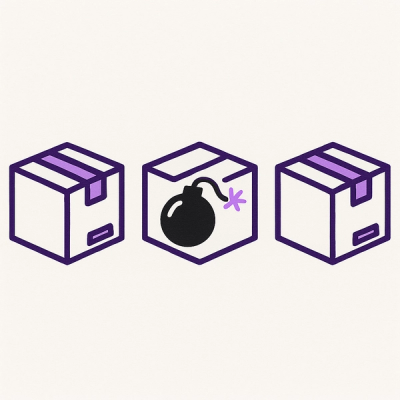react-history 

react-history provides tools to manage session history using React. It's a thin wrapper around the history package. In web browsers, this library also transparently manages changes to the URL which makes it easier for creators of single-page applications to support things like bookmarks and the back button.
Note: This library is highly experimental.
Installation
Using npm:
$ npm install --save react-history
Then with a module bundler like webpack, use as you would anything else:
import { BrowserHistory } from 'react-history'
var BrowserHistory = require('react-history').BrowserHistory
The UMD build is also available on unpkg:
<script src="https://unpkg.com/react-history/umd/react-history.min.js"></script>
You can find the library on window.ReactHistory.
Usage
react-history ships with 3 different history components that you can use depending on your environment.
<BrowserHistory> is for use in modern web browsers that support the HTML5 history API (see cross-browser compatibility)<MemoryHistory> is used as a reference implementation and may also be used in non-DOM environments, like React Native<HashHistory> is for use in legacy web browsers
Depending on the method you want to use to keep track of history, you'll import (or require) one of these methods directly from the package root (i.e. history/BrowserHistory). For the sake of brevity, the term <History> in this document refers to any of these implementations.
Basic usage looks like this:
import History from 'react-history/BrowserHistory'
const App = React.createClass({
render() {
return (
<History>
{({ history, action, location }) => (
<p>The current URL is {location.pathname}{location.search}{location.hash}. You arrived at this URL via a {action} action.</p>
)}
</History>
)
}
})
The props for each <History>, along with their default values are:
<BrowserHistory
basename=""
forceRefresh={false}
keyLength={6}
getUserConfirmation={(message, callback) => callback(window.confirm(message))}
/>
<MemoryHistory
initialEntries={[ '/' ]} // The initial URLs in the history stack
initialIndex={0} // The starting index in the history stack
keyLength={6} // The length of location.key
// A function to use to confirm navigation with the user. Required
// if you return string prompts from transition hooks (see below)
getUserConfirmation={null}
/>
<HashHistory
basename="" // The base URL of the app (see below)
hashType="slash" // The hash type to use (see below)
// A function to use to confirm navigation with the user (see below)
getUserConfirmation={(message, callback) => callback(window.confirm(message))}
/>
Listening
<History> elements call their children function every time the URL changes.
<History>
{({ history, action, location }) => (
<div>
<p>The current URL is {location.pathname}{location.search}{location.hash}.</p>
<p>You arrived at this URL via a {action} action.</p>
</div>
)}
</History>
The history object is the same object you'd get if you created your own history object directly. Please refer to the history docs for more information on how to use it.
The location and action properties represent the current URL and how we got there.
Navigation
react-history also provides the following components that may be used to modify the current URL:
<Push> pushes a new entry onto the history stack<Replace> replaces the current entry on the history stack with a new one<Pop> modifies the current pointer or index into the history stack<Back> moves back one entry in the history, shorthand for <Pop go={-1}/><Forward> moves forward one entry in the history, shorthand for <Pop go={1}/>
These components are called "action" components because they modify the URL. When any of these are rendered, the URL updates and <History> objects emit a new location.
<Push> and <Replace> accept either:
path and state props or- a
location prop
<Push path="/home?the=query#the-hash" state={{ some: 'state' }}/>
<Push location={{
pathname: '/home',
search: '?the=query',
hash: '#the-hash'
state: { some: 'state' }
}}/>
Note: Location state is not supported using <HashHistory>.
For example, you could build a very simple <Link> component using a <Push>:
import React, { PropTypes } from 'react'
import { Push } from 'react-history/Actions'
const Link = React.createClass({
propTypes: {
to: PropTypes.string.isRequired
},
getInitialState() {
return { wasClicked: false }
},
render() {
const { to, ...props } = this.props
if (this.state.wasClicked)
return <Push path={to}/>
return (
<span {...props} onClick={() => this.setState({ wasClicked: true })}/>
)
}
})
Note: This <Link> implementation is for demonstration purposes only. It is not accessible and does not include many of the nice features of a real hyperlink. If you're looking for a proper <Link> implementation, please use react-router.
Blocking Transitions
react-history lets you register a prompt message that will be shown to the user before location listeners are notified. This allows you to make sure the user wants to leave the current page before they navigate away. You do this by rendering a <Prompt> component.
import Prompt from 'react-history/Prompt'
const Form = React.createClass({
getInitialState() {
return { inputText: '' }
},
handleChange(event) {
this.setState({ inputText: event.target.value })
},
render() {
const { inputText } = this.state
return (
<form>
<Prompt
message="Are you sure you want to leave before submitting the form?"
when={inputText}
/>
<input
type="text"
defaultValue={inputText}
onChange={this.handleChange}
/>
</form>
)
}
})
Note: You'll need to provide a getUserConfirmation prop to use <Prompt>s with <MemoryHistory> (see the history docs).
Using a Base URL
If all the URLs in your app are relative to some other "base" URL, use the basename option. This option transparently adds the given string to the front of all URLs you use.
<History basename="/the/base">
{({ location }) => (
<p>The current pathname is {location.pathname}.</p>
)}
</History>
Note: basename is not suppported in <MemoryHistory> where you have full control over all your URLs.
Forcing Full Page Refreshes in <BrowserHistory>
By default <BrowserHistory> uses HTML5 pushState and replaceState to prevent reloading the entire page from the server while navigating around. If instead you would like to reload as the URL changes, use the forceRefresh option.
<BrowserHistory forceRefresh/>
Modifying the Hash Type in <HashHistory>
By default <HashHistory> uses a leading slash in hash-based URLs. You can use the hashType option to use a different hash formatting.
<HashHistory hashType="slash"/>
<HashHistory hashType="noslash"/>
<HashHistory hashType="hashbang"/>
Thanks
Thanks to BrowserStack for providing the infrastructure that allows us to run our build in real browsers.





